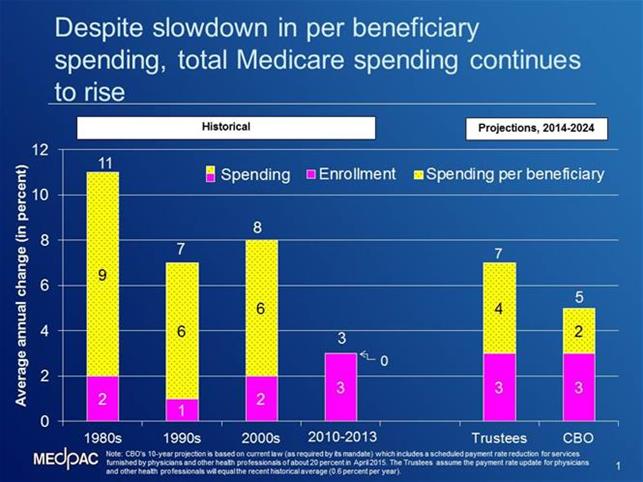
If you missed the Commission meeting last week, you might have missed this piece of analysis of the spending growth trends in Medicare.
From the yellow patterned portion of the bars, we see the slowdown that has been the subject of much discussion in media and policy discussions. Per beneficiary spending growth has fallen from average annual rates of 9 percent in the 1980s and 6 percent in the 1990s and 2000s to zero percent over the last 3 years.
For the next 10 years, as shown by the right-hand side of the graph, the Medicare Trustees and the Congressional Budget Office (CBO) project that growth in per beneficiary spending will be higher than the recent lows, but lower than the historic highs, with an average annual growth rate of 4 percent for the Trustees and 2 percent for CBO.
What probably has not received as much attention is the increase in enrollment growth (from about 2 percent per year historically to 3 percent) that occurred over the last few years and is projected to continue throughout the next decade as the baby boom generation continues to age into the Medicare program.
Despite the slowdown in spending per beneficiary, the Trustees project growth in total spending to average 7 percent over the next decade and CBO projects 5 percent.
Keep in mind that GDP is projected to grow at about 4 percent per year over the next decade. So Medicare spending is still projected to grow 1 to 3 percent faster than GDP.
For more analysis of Medicare spending trends and the context for Medicare payment policy, check out the slides from the September Public Meeting. You can also read the transcript of the Commission’s discussion.
